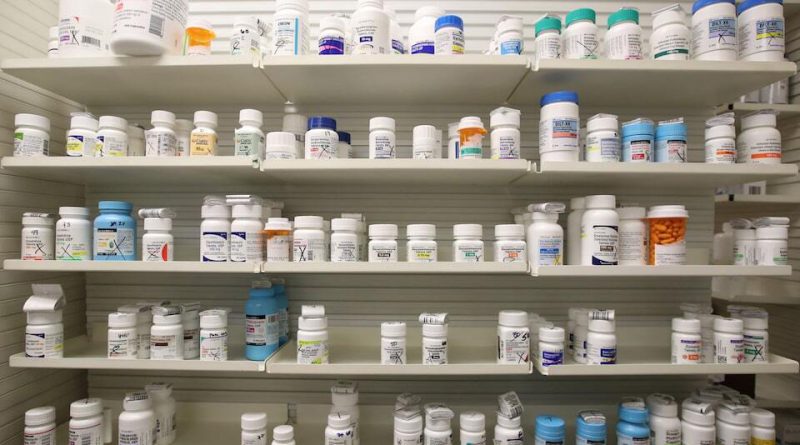Study Highlights $1.5 Billion Savings in U.S. Drug Costs
ICER study shows aligning U.S. drug prices with health value benchmarks could save $1.5 billion and improve patient access.
A new report from the Institute for Clinical and Economic Review (ICER) has revealed that the United States could have saved up to $1.5 billion in drug costs during the first year after the approval of several key medicines if their prices had been aligned with the organization’s health benefit benchmarks.
The findings underscore a growing opportunity for the U.S. to make its healthcare system more efficient and patient-friendly through fair and value-based pricing models.
The analysis, based on 23 drugs reviewed by ICER, comes at a time when healthcare costs and prescription drug affordability remain key concerns for millions of Americans.
According to the research, aligning drug prices with ICER’s “Health Benefit Price Benchmark” — which links prices to the overall health improvements a treatment delivers — could have resulted in massive savings without compromising innovation or access.
The study highlights how more transparent, evidence-based pricing can help balance affordability with the ongoing need to reward pharmaceutical advancements.
ICER’s report found that if drug prices after rebates and discounts matched the benchmark range, total savings in the first year post-approval could have reached between $1.3 billion and $1.5 billion.
This potential reduction demonstrates the financial impact that fair pricing practices can have not only on patients but also on government healthcare programs such as Medicaid.
The findings have fueled new discussions on how pricing reforms can help achieve a more sustainable and equitable healthcare system.
In recent years, the cost of new medicines in the U.S. has continued to rise, outpacing inflation and creating significant financial strain on patients and healthcare providers alike.
ICER’s data revealed that from 2022 to 2024, the inflation-adjusted median annual net launch price of drugs increased by 51%, while list prices grew by 24% during the same period.
These rising prices, according to ICER President and CEO Sarah Emond, are making life-saving treatments increasingly inaccessible for many patients.
“Launch prices are going up, patient access is going down, and in many cases, we are overpaying for treatments,” Emond said, emphasizing the importance of aligning costs with real-world health outcomes.
The report’s findings are consistent with broader analyses of the pharmaceutical market, including those by Reuters, which have also shown that newly launched drugs are debuting at record-high prices.
However, ICER’s benchmark-based approach provides a concrete framework for measuring fairness in pricing. The Health Benefit Price Benchmark evaluates the lifetime benefit of a drug to patients and suggests a price range that reflects its actual clinical value.
This model has been praised by many economists and policymakers for promoting accountability in an industry often criticized for opaque and inconsistent pricing.
Critics from the pharmaceutical industry, however, argue that ICER’s methodology does not capture the full societal value of innovative treatments.
Kimberly Westrich, chief strategy officer at the National Pharmaceutical Council, said that the analysis overlooks the long-term benefits medicines provide to health systems, productivity, and society.
She added that while ICER highlights “overspending” when prices exceed benchmarks, it fails to acknowledge cases where drugs deliver value beyond their price.
Still, the conversation sparked by this report underscores the need for continued collaboration between regulators, manufacturers, and policymakers to find balanced solutions.
Amid these debates, the federal government has been exploring strategies to tie U.S. drug prices more closely to those paid in other high-income nations.
Recently, Pfizer and the U.S. administration reached an agreement to ensure that certain medicines sold to the Medicaid program for low-income Americans would not exceed prices seen internationally.
This marks a shift toward a more globally aligned and fair drug pricing policy that could reshape how pharmaceuticals are evaluated and marketed.
Beyond potential savings, the ICER findings offer hope for millions of Americans struggling with the rising costs of prescription drugs. Value-based pricing could enable broader access to essential treatments, strengthen healthcare budgets, and enhance patient outcomes.
By tying price to performance, the U.S. can foster an environment that continues to reward innovation while ensuring fairness and affordability for all.
Ultimately, the study serves as a call to action — encouraging pharmaceutical companies, healthcare providers, and policymakers to embrace a more transparent and equitable pricing structure.
A system built on value and patient benefit could drive better health outcomes, reduce economic pressure, and make quality healthcare more sustainable.
As ICER’s report demonstrates, the path forward lies not in limiting innovation, but in ensuring that progress remains accessible, affordable, and aligned with the true needs of society.



